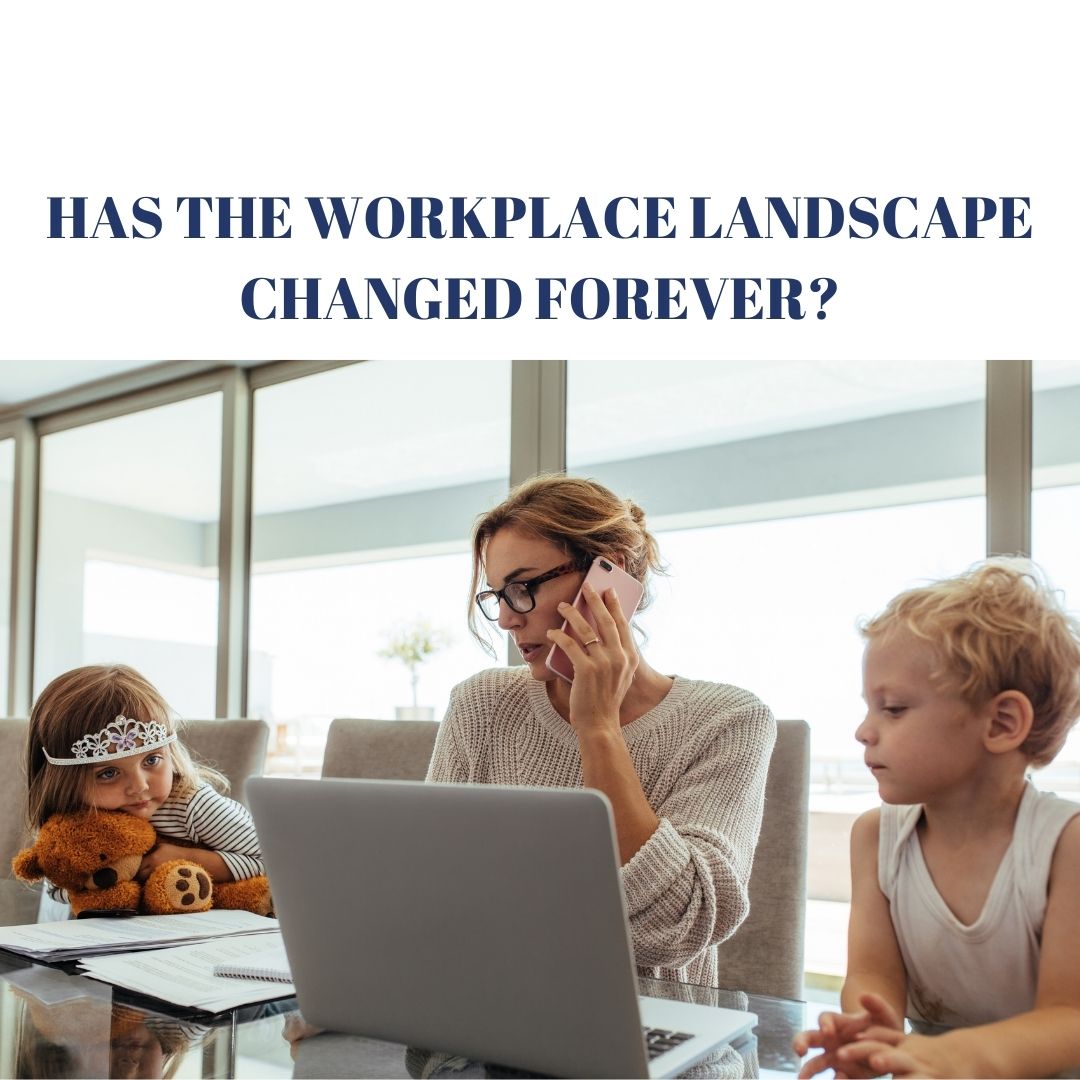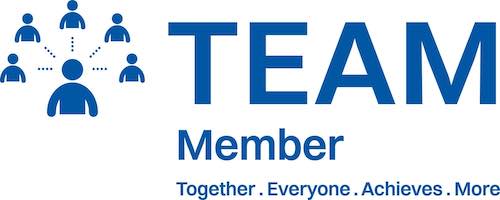The Workplace Of The Future

HAS THE WORKPLACE LANDSCAPE CHANGED FOREVER?

The work environment as we know it changed overnight due to the pandemic, potentially forever, but what does it look like now, and what might it look like in the future?
What we know is that many corporations have not fully re-opened their office doors to all their staff members, and currently work on a rota, hybrid, or remote basis. However, the big question is what happens next for both employees and employers that will satisfy both the individual and company requirements to provide the ideal personal and profitable working solution? Either way it seems certain that this shift to different working patterns is an opportunity for companies to re-establish how they run their companies and support their teams whether in or outside of the office.
Working in recruitment before, during and now post pandemic restrictions, there is no doubt we have seen a massive swing in terms of gaining more roles from companies seeking to employ additional staff, but there is a distinct lack of candidates applying for new roles on the market. It doesn’t seem anyone is fully aware of why this is, but the aftereffects of Brexit, Lockdowns, and the change in working habits have certainly contributed to a change in needs and wants, but peoples new normal may not be everyone’s wish for the future workplace environment, so companies are having to rethink how they regain some normality vs what works for everyone involved.
WHAT DOES THE FUTURE WORKING ENVIRONMENT LOOK LIKE?
It’s not an easy question to answer, however the shift could certainly be significant for many companies and much needs to be considered going forward, whether that’s less need for office space, hybrid working, hot desk working or long-term remote working for many staff. However, how simple is it to change structures that have existed prior to the current situation, as well as ensuring one size fits all?
Over the last two years both companies and employees have adapted to change, and commuters have been able to reduce their travel on average by an hour to and from their
place of work, allowing more time to focus on their daily tasks, as well as gaining a healthier work life balance. Companies certainly need to consider the long-term efficiencies that could be gained by introducing official remote, hybrid or return to office interactions. They will also have to take into consideration the benefits of what can be generated by people working in person with others and the value this brings to both the employer and employee e.g., creativity, knowledge sharing and mentoring.
A health & safety aspect that also needs addressing is that working on a dining room table with a chair not fit for purpose will most certainly have long term affects, so companies need to plan and ensure risk assessments have been completed and budgets allocated to provide the correct facilities to work from home.
A wider challenge is that a large proportion of the population can’t or don’t wish to work from home, as well as those teams that most certainly thrive from working together face to face. New employees also may suffer, from never interacting in person to wider team members, relationship building could prove difficult, as well as progression from their capabilities not being noticed on a regular basis.

The steadiest way to create true flexibility, whilst also gaining the greatest value from the workforce, is to create an environment that provides the opportunity and motivation for talent to flourish. The interaction between people and technology will need to be reimagined so that employees feel more fulfilled, and potential is recognised, sustained, and appreciated. To achieve this, organisations will need to consider all aspects of the business and the best way to reach the greatest results.
To flourish a workplace needs to generate a sense of purpose and loyalty as well as building human connections. A change in mindset is critical for achieving results, creating new long-term goals, and creating an organisation with the malleability to change and flexibility to adapt to any situation. It’s time for change, it’s time to reflect, but it’s also an exciting time to review how an organisation is run, how it’s employees work, develop and grow.
WHAT DOES 2022 LOOK LIKE?
Employers have struggled to recruit and retain top talent in recent months. According to a report from Glassdoor, and it seems the tight labour market trends will continue during 2022. A key to attract and retain top talent is a renewed focus on company culture. The organisations that succeed will need to rethink employee engagement and develop an employee-centric work environment.
A recent survey found 81% of employees who have been working from home through the pandemic either don't want to go back or prefer a hybrid schedule. "As we're preparing to get back to business as usual, it seems professionals don't want 'business as usual,' "They want flexibility from their employers to allow them to maintain the new work/home balance and productivity they have come to enjoy." Prioritising flexibility also demonstrates that employers value their employee’s health and well-being. To recruit top performers, embracing a flexible workplace culture will be essential.
It’s good to remember that everyone’s homeworking experience will be varied, depending on many factors such as the nature of their role or their level of seniority and experience, but employers who have invested in effective support systems will already have seen both the pros and con effects of their staff working from home.
There will most certainly be challenges to homeworking, such as equipment, solitude, and feeling disconnected, as well as maintaining a fine line between home and work life. It is likely that this year employers will have to liaise with all their employers, understand their personal requirements and perhaps consider the benefits of a hybrid arrangement with the goal of reaching a mutual benefit to both parties and the company long term.

THE FUTURE
Whilst being office-based was certainly the prime way of working pre-pandemic, the case is stronger now to change the landscape, but as with any major business decision, organisations need to step back and review what to change, why and how?
WHY CONSIDER HYBRID WORKING?
Fundamentally a workforce is essential to a business and therefore it is important to gauge whether a hybrid working environment would be appreciated by everyone involved within an organisation. However, considering the changes and many effects of the pandemic on work life, a hybrid approach might be the best way forward right now.
People will naturally have different wants and needs from their careers and working environments and will have had varied experiences from working from home, as well as different personal circumstances over the last two years that may have changed their personal aspirations. It’s becoming ever clearer that a one-size-fits-all will possibly be difficult to implement, so the key here will be FLEXIBLITY

Fundamentally understanding the overall wants and needs of a workforce will give a strong starting platform to introduce the ideal working situation, some will love the prospect of Hybrid working, others may wish to remain remote, and some will be somewhere in the middle, recognising the value of both ways of working. Therefore, the option of flexibility will be essential for the forceable future.
Companies who are willing to listen and learn are more likely to have a diplomatic approach to their staffing needs and this should in turn reflect well on them as an employer. As always performance reviews need to be in place to monitor any new way of working to ensure engagement, and staff retention as well as the overall effect on the business and its bottom line.
Basically, a hybrid working approach could enable a business to cater to the differing needs of its workforce whilst still maintaining a central office location from which it can flourish and expand. It may not be the complete answer, but certainly a step forward as we all wish to come through the pandemic and look forward. Hybrid working can help organisations to realise key benefits, including lower overheads and increased wellbeing, satisfaction, and engagement among employees.
All things considered, it seems sensible for organisations that can operate and function on a hybrid basis to seriously consider this as a mid-term solution.
One thing we have all learnt over the past few years is that we are all adaptable and even though sometimes forced into an unknown direction, with the right people and tools in place, we can manage, survive, and often grow stronger.






